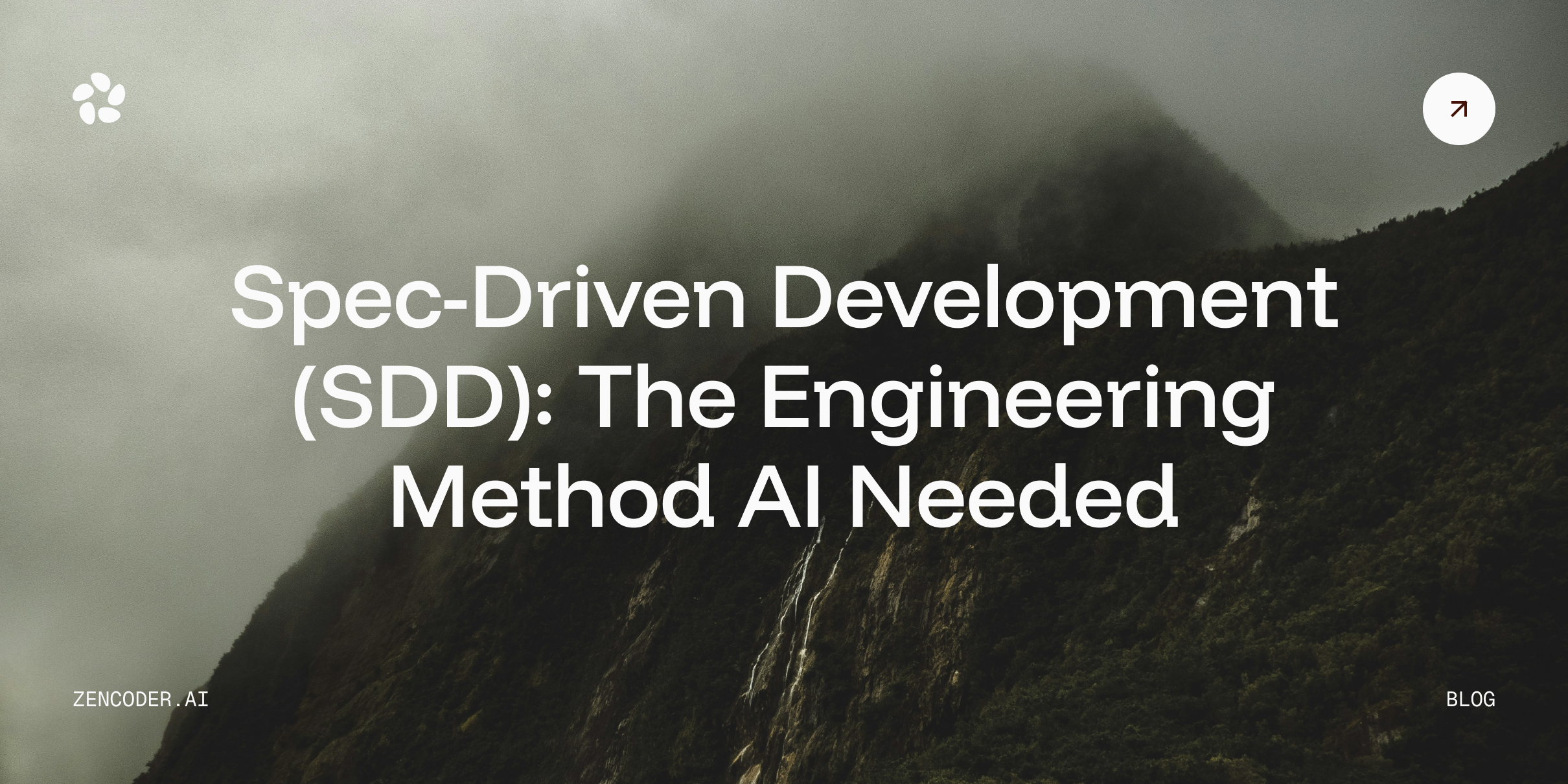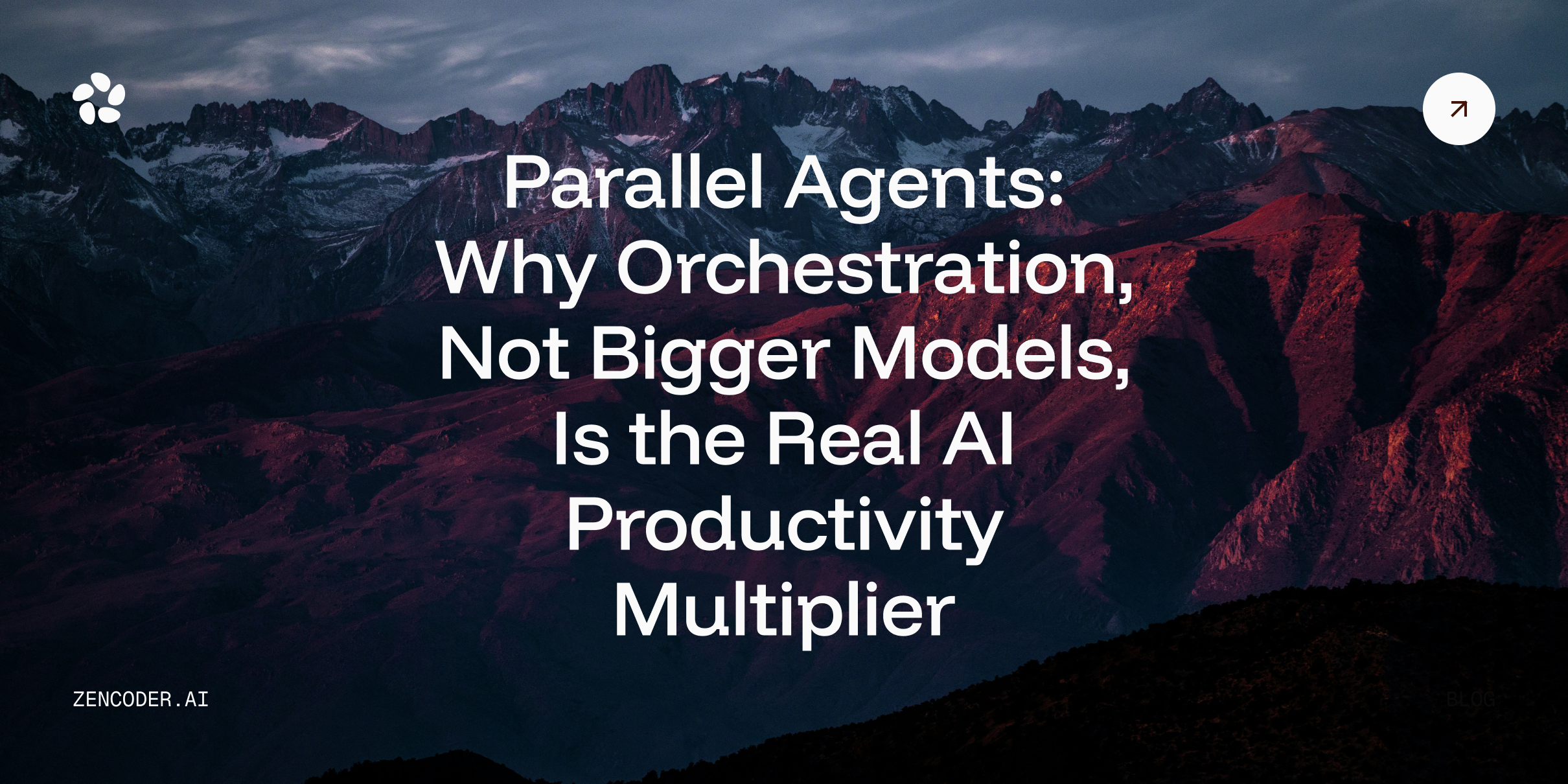Artificial intelligence is reshaping the software development landscape, moving from a futuristic concept to a daily reality for engineering teams. At the forefront of this transformation is AI code generation: a technology that promises to accelerate development cycles, automate routine tasks, and unlock new levels of productivity. But as with any powerful tool, its effectiveness hinges on how it's used. Generating code is one thing: ensuring it’s robust, secure, and correct is another challenge entirely.
This is where the indispensable role of human validation comes in. The promise of AI is not to replace skilled developers, but to augment their abilities, creating a powerful synergy between machine efficiency and human expertise. True innovation lies in building this partnership correctly.
In this article, you'll discover:
- What AI code generation is, how it works, and its key benefits.
- The hidden dangers of unverified AI code and the critical importance of human oversight.
- A practical, step-by-step workflow for validating AI-generated code.
- The current landscape of AI coding tools and their limitations.
- How Zencoder's unique architecture provides a complete solution for reliable, context-aware AI code generation with built-in validation.
- Real-world applications for solving complex development challenges.
- The future of the developer role in an AI-driven world.
By the end, you will have a comprehensive framework for leveraging AI code generation responsibly, ensuring that speed never comes at the cost of quality.
Let’s dive in!
A Deeper Look at AI Code Generation
At its core, AI code generation involves using large language models (LLMs) to automatically write code. These models are trained on billions of lines of public code from sources like GitHub, enabling them to recognize patterns, understand syntax, and generate functional code snippets, functions, or even entire applications based on a developer's instructions.
The instructions can range from a simple natural language prompt (e.g., "Create a Python function that connects to a PostgreSQL database and fetches user data") to providing an existing piece of code that needs to be refactored or completed. The benefits of this approach extend far beyond just writing code faster:
- Reduced cognitive load: Developers can offload repetitive, boilerplate tasks, freeing up mental energy to focus on complex business logic and architectural challenges. This means less time spent on syntax and more time on strategy.
- Accelerated development cycles: From prototyping new features to writing unit tests, AI can significantly shorten the time it takes to move from idea to implementation. This speed allows for more rapid iteration and a faster response to market demands.
- Enhanced learning and onboarding: Junior developers or those new to a project can use AI to quickly understand existing codebases and learn new languages or frameworks by example. It acts as an interactive guide, explaining complex code sections in plain English.
- Improved code consistency: AI can be guided to follow specific style guides and patterns, helping to maintain a consistent and readable codebase across a large team. This is crucial for long-term maintainability.
The Hidden Dangers of Unchecked AI Code
While the benefits are compelling, relying on unverified AI output is a high-stakes gamble. An AI model lacks true understanding and intent; it is a pattern-matching engine. This can lead to code that appears correct on the surface but contains subtle, dangerous flaws. The pressure to ship faster can tempt teams to skip rigorous validation, but this approach often leads to significant technical debt and long-term pain.
Here are some of the most critical risks of deploying unvalidated AI-generated code:
- Subtle logical flaws: The AI might generate code that works for the most common use cases but fails on edge cases. For example, it could produce a calculation that doesn't account for negative inputs or a data processing function that breaks when it encounters null values, leading to hard-to-diagnose bugs in production.
- Security vulnerabilities: This is perhaps the most severe risk. An AI trained on public code may inadvertently replicate common but insecure coding patterns. It could generate code susceptible to SQL injection, create APIs with improper authorization checks, or expose sensitive information in error logs. These are the kinds of vulnerabilities that security teams spend countless hours trying to prevent.
- Performance inefficiencies: The AI’s primary goal is to produce a functional result, not necessarily the most performant one. It might opt for a simple, brute-force algorithm that works fine with a small test dataset but grinds to a halt under production load, causing system-wide slowdowns.
- Architectural drift: An AI model doesn't share the long-term vision of your human architects. Without a deep understanding of your entire system, it can introduce dependencies or patterns that violate your established architectural principles. This leads to a tangled, tightly-coupled codebase that is difficult to maintain and scale.
- Copyright and licensing issues: AI models are trained on vast amounts of open-source code. There is a risk that the generated code could be a near-verbatim copy of code with a restrictive license, inadvertently creating legal and compliance issues for your organization.
Implementing a Robust Validation Workflow for AI-Generated Code
To mitigate these risks, developers must adopt a systematic validation process. Treating AI-generated code with the same skepticism and rigor as code from a new junior developer is a healthy starting point. A comprehensive workflow should include several distinct stages:
- Strategic prompting and review: The process starts before any code is written. Clearly define the requirements, constraints, and desired outcome in your prompt. Once the code is generated, don't just copy and paste. Read through it line by line to ensure you fully understand what it does and how it works. If you can't explain it, you shouldn't ship it.
- Functional and unit testing: This is non-negotiable. Does the code perform its intended function correctly? Write comprehensive unit tests that cover not only the "happy path" but also edge cases, invalid inputs, and potential failure modes. This is the first line of defense against logical flaws.
- Security auditing: The generated code must be scrutinized for potential vulnerabilities. This can involve manual inspection for common anti-patterns or, more effectively, using automated security scanning tools to analyze the code for known issues like those in the OWASP Top 10.
- Performance profiling: Never assume the generated code is performant. Use profiling tools to measure its execution time and memory consumption, especially for functions that will operate on large datasets or be called frequently. Identify and optimize any bottlenecks before they impact production.
- Integration and system testing: Code doesn't exist in a vacuum. It must be tested within the larger application to ensure it integrates correctly with other components and doesn't cause unintended side effects. This step is crucial for preventing architectural drift and ensuring system stability.
- Adherence to standards: Finally, ensure the code complies with your team's coding standards, style guides, and documentation practices. Consistent code is maintainable code. This includes everything from variable naming conventions to generating clear and accurate docstrings.
This multi-layered process transforms the developer's role from a simple coder into a strategic reviewer and quality gatekeeper, ensuring that AI is used as a productivity multiplier, not a source of hidden risk.
Navigating the Landscape of AI Coding Tools: From Assistants to Agents
The market for AI coding tools has exploded, but not all tools are created equal. They generally fall into three categories, each with a different level of capability and integration:
- Category 1: Simple autocomplete tools: These are the most basic form of AI assistance. They function like "autocomplete on steroids," suggesting single lines or small blocks of code as you type. While helpful for reducing keystrokes, their understanding is limited to the immediate context of the file you're working in. They lack a broader architectural understanding and cannot perform complex tasks.
- Category 2: Conversational chat assistants: These tools, often running in a separate window or a side panel in the IDE, allow you to have a conversation with an AI. You can ask for explanations, brainstorm ideas, or request code snippets for a specific problem. While more powerful for problem-solving, they are fundamentally disconnected from your codebase. The developer must manually copy, paste, and integrate the code, and the AI has no awareness of whether its suggestions actually work within the project.
- Category 3: Autonomous AI agents: This is the most advanced category and represents the future of AI-driven development. An autonomous agent, like Zencoder's Zen Agents, is deeply integrated into your development environment and possesses a comprehensive understanding of your entire codebase. It doesn't just suggest code; it can be delegated entire tasks—like fixing a bug, implementing a feature, or refactoring a module. It operates within the context of your project, understands your architecture, and can even run tests to validate its own work.
The critical difference lies in context and autonomy. Simple tools lack context, and conversational tools lack autonomy. Only a true agent-based system can provide the deep, repository-wide context needed to generate code that is not just syntactically correct, but architecturally sound and immediately useful.
Zencoder: Bridging the Gap Between Generation and Validation
Understanding this critical gap is precisely why Zencoder was built. At Zencoder, we believe that for AI code generation to be truly transformative, validation cannot be an afterthought—it must be an integral part of the process.
Zencoder achieves this through a unique combination of proprietary technologies that work in concert:
- Deep codebase context with Repo Grokking™: To prevent architectural drift, Zencoder first needs to understand your project's DNA. Our Repo Grokking™ technology goes far beyond surface-level analysis. It builds a comprehensive model of your entire repository, mapping out dependencies, architectural patterns, and coding conventions. This ensures that any code generated by a Zen Agent is perfectly tailored to your project, as if it were written by a senior developer who knows the codebase inside and out.
- Iterative Refinement with the Agentic Pipeline: To combat logical flaws, Zencoder’s AI agents use a multi-step Agentic Pipeline. Unlike single-pass tools that output the first answer they find, our agents engage in a process of self-correction. They generate code, test it against the requirements, identify errors or inefficiencies, and then iteratively refine the solution. This reasoning process catches subtle bugs and logical errors before the code is ever presented to the developer.
- Automated validation with Zentester: To provide the final layer of assurance, Zencoder includes Zentester, a powerful capability for automated end-to-end testing. Zencoder can analyze a new feature or bug fix and autonomously generate the necessary E2E tests to validate it. This ensures that your test coverage keeps pace with your accelerated development speed, confirming that the new code works as expected without introducing regressions.
By integrating directly into your IDE, Zencoder’s Zen Agents act as true collaborators. They handle the heavy lifting of coding and the crucial first-pass validation, presenting you with high-quality, pre-vetted solutions that you can confidently review and integrate.
Practical Applications: Solving Real-World Development Challenges with Zencoder
The theoretical benefits of an agent-based system become clear when applied to the real-world challenges developers face every day. Here’s how Zencoder transforms complex tasks into manageable workflows:
- Tackling legacy code refactoring: Legacy systems are often brittle and poorly documented. Manually refactoring them is risky and time-consuming. With Zencoder, a developer can delegate the task: "Refactor the
OrderProcessingmodule to use the newPaymentGatewayservice and improve its test coverage." Zencoder's Repo Grokking™ first understands the entire module and its dependencies. Then, its Agentic Pipeline generates the refactored code, creates new unit tests, and runs them to ensure no existing functionality was broken, dramatically de-risking the modernization process. - Automating unit and E2E test generation: Writing thorough tests is critical, but often tedious. A developer can simply point Zencoder to a new feature and instruct it: "Generate a comprehensive suite of unit tests for the
UserAuthenticationclass, covering all success and failure scenarios." For more complex workflows, Zentester can be tasked to "Create an E2E test that simulates a user signing up, adding an item to their cart, and completing a purchase," validating the entire user journey automatically. - Accelerating API development: Building a new REST API involves significant boilerplate code for endpoints, request/response models, and validation logic. A developer can provide an OpenAPI specification or a simple description and let Zencoder generate the entire controller structure, data transfer objects, and service layer stubs, all while adhering to the existing architectural patterns of the application.
- Generating and maintaining documentation: Documentation debt is a silent killer of productivity. Zencoder can analyze entire modules or even the full codebase and automatically generate or update docstrings and Markdown documentation. This ensures that the documentation always stays in sync with the code, making onboarding and maintenance far more efficient for the entire team.
The Future of AI and Human Collaboration in Software Development
The introduction of autonomous AI agents is not leading to the replacement of developers, but rather to a profound evolution of their role. The focus is shifting away from the mechanical act of typing code and toward higher-level strategic thinking.
In this new paradigm, the developer acts as an AI Orchestrator. Their primary responsibilities will include:
- Architectural vision: Defining the high-level structure, system boundaries, and long-term technical strategy of the application.
- Complex problem decomposition: Breaking down large, ambiguous business problems into smaller, well-defined tasks that can be delegated to AI agents.
- Strategic review and integration: Acting as the final quality gate, reviewing the solutions proposed by AI agents, providing critical feedback, and ensuring the integrated result is cohesive, secure, and aligned with business goals.
- Creative solutioning: Focusing on novel problems that have no pre-existing patterns for an AI to follow, pushing the boundaries of what the software can do.
This human-AI partnership promises a more fulfilling and impactful role for developers, freeing them from tedious implementation details to concentrate on the creative and strategic aspects of software engineering that deliver the most value.
Conclusion
AI code generation is undeniably a powerful force in modern software development. However, its true potential is only unlocked when paired with rigorous, intelligent validation. Speed without quality is a liability, and the most effective development teams will be those who master the art of the human-AI partnership. A haphazard approach leads to technical debt and risk, while a systematic one leads to unprecedented productivity and innovation.
Zencoder provides the framework for this new paradigm. By combining deep contextual understanding with autonomous, self-correcting agents and integrated testing, Zencoder ensures that you can leverage the speed of AI without sacrificing the quality and reliability that human expertise guarantees. It is the only solution that treats validation not as a separate step, but as the core of the generation process itself.
Ready to build faster and smarter? Get Started with Zencoder to experience AI code generation with validation at its core.



